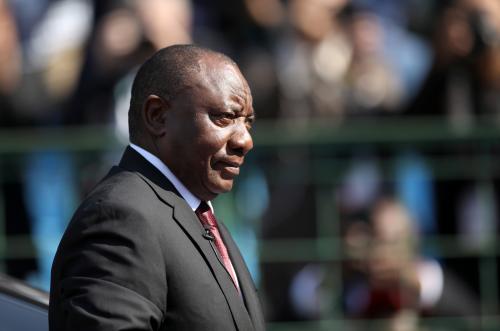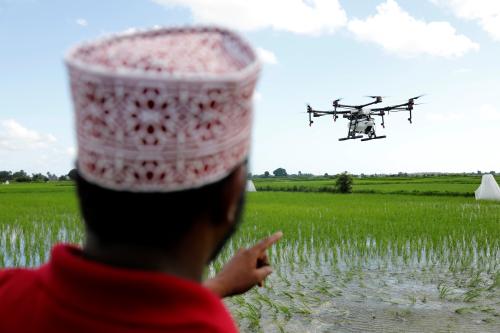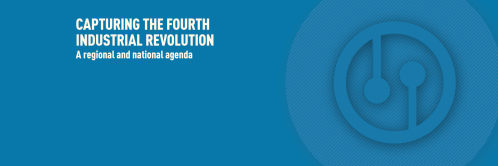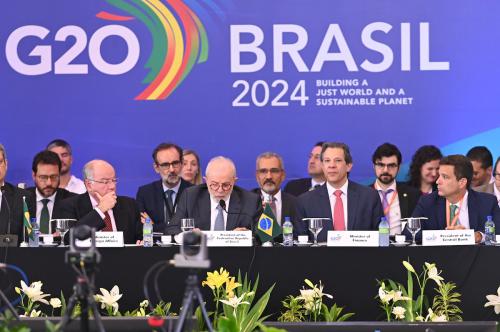Below is a Viewpoint from Chapter 5 of the Foresight Africa 2020 report, which explores six overarching themes that provide opportunities for Africa to overcome its obstacles and spur inclusive growth. Read the full chapter on capturing the Fourth Industrial Revolution.
Africa needs a digital transformation for faster economic growth and job creation. The World Bank estimates that reaching the African Union’s goal of universal and affordable internet coverage will increase GDP growth in Africa by 2 percentage points per year. Also, the probability of employment—regardless of education level—increases by 6.9 to 13.2 percent when fast internet becomes available, as it facilitates firm entry and boosts productivity and exports. As such, digital technologies offer a unique opportunity for African countries to significantly transform various sectors of their economies. However, this potential cannot be fulfilled unless Africa addresses its sizeable deficits in digital infrastructure.
Africa is seriously lagging on the digital front. For example, internet penetration, quality, and affordability are very low compared to the rest of the world: Internet penetration in 2019 averaged 39.6 percent in Africa compared to 62.7 percent in the rest of the world, though there is immense variation among countries, ranging from 89.8 percent in Kenya to 5.3 percent in Burundi. Furthermore, in 2017, Africa used only 1 percent of the world’s total international internet bandwidth. The median mobile broadband download speed in Africa is 2.7 megabits per second (Mbits/s), roughly half the global median of 5.2 Mbits/s, and the monthly cost of a fixed broadband connection is 36.6 percent of gross national income, compared with 14.5 percent globally.
African countries spend about 1.1 percent of GDP on digital investment, while advanced economies spend an average of 3.2 percent. Thus, business-as-usual is not an option, as it will continue to widen the digital divide and drive further marginalization of Africa.
With its large numbers of imaginative and creative youth, Africa should become the startup continent.
On the bright side, the region has shown a readiness to embrace full digitization: It has seen the highest rate of increase in internet use and connectivity in the world over the last two decades and is home to a young and dynamic population. Over the same time period, the number of internet users in Africa has increased more than 116-fold, from 4.5 million to 523 million, while that in the rest of the world did not even double. Young Africans in particular are capitalizing on new technologies to launch startups and to find solutions to the continent’s problems. Successful technological innovations, ranging from mobile banking services in Kenya to delivery of life-saving medications by drones in Rwanda, are widespread. Those successes need to be scaled up to the continental level.
Unsurprisingly, African youth, aiming to fully integrate into the 21st century economy, are demanding better digital services. In response, the African Union, supported by the World Bank, is pursuing an initiative for digital transformation, accelerating the rate of internet use to catch up and even surpass the rest of the world in a decade or less.
This Digital Moonshot initiative has five key elements. The first element is investing in digital infrastructure to improve access and quality, which includes investing in connectivity (e.g., highspeed internet, internet exchange points), the Internet of Things (e.g., mobile devices, computers) and data repositories (e.g., data centers, clouds). These upgrades will require some public investments, but most investment will need to come from the private sector, hence the need for legal and regulatory reforms to encourage private investment.
The second element is investing in a digitally savvy workforce to build robust digital economies and competitive markets. Third is investment in digital platforms that offer products and services through digital channels. Most platforms are developed by the private sector, but some (e.g., digital ID systems) are public sector-led. Fourth is the development of digital financial services to enhance financial inclusion; M-Pesa in Kenya is the best example of such a system. The development of digital financial systems requires reforms of monetary and financial regulations and supervision systems to allow mobile phone operators to provide financial services. The fifth element is to create an ecosystem to encourage digital entrepreneurship and innovation. With its large numbers of imaginative and creative youth, Africa should become the startup continent.
Finally, I must highlight two additional points. First, the goal of digitally transforming Africa is achievable. The total cost of this initiative is estimated at between $80 billion and $100 billion over 10 years, with more than half of the investment coming from the private sector. The challenge is not just to mobilize public resources; rather, the biggest challenge is to put in place policies and institutions that encourage the private sector to invest. Second, the needs of the digital economy should not distract from work to deal with Africa’s other needs, especially investment in human capital, energy, and transport.






Commentary
Shooting for the moon: An agenda to bridge Africa’s digital divide
February 7, 2020